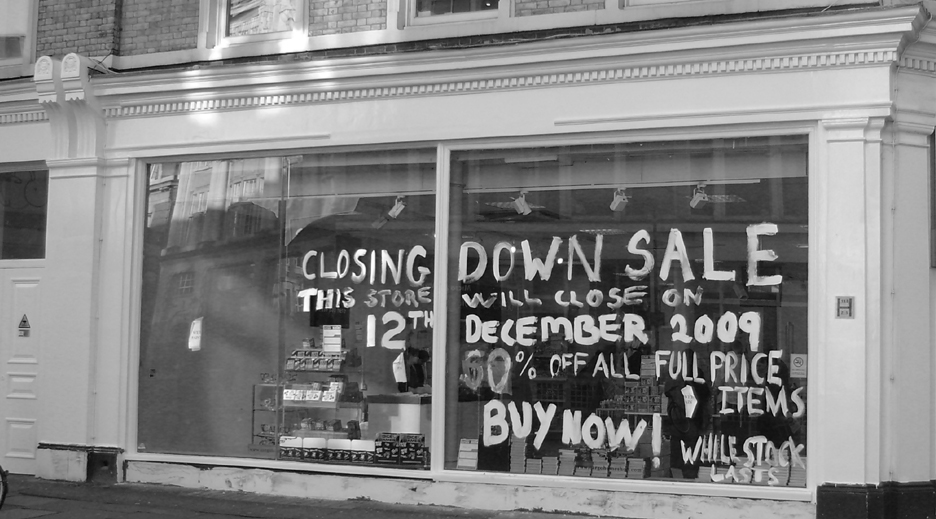Save our high streets
At the end of last month a report by PricewaterhouseCoopers found that almostthree-quarters of high street shops were holding sales. This is highly unusual for this time of year and compares to 40 per cent of stores for the same...
At the end of last month a report by PricewaterhouseCoopers found that almostthree-quarters of high street shops were holding sales. This is highly unusual for this time of year and compares to 40 per cent of stores for the same period in 2009.
We have heard so many of these stories over the past few years and it is hard not to conclude that, in many areas, the high street is struggling. In fact, in the first six months of this year 35 companies have failed affecting almost 40,000 employees.
Business confidence is at an all time low and the government’s disastrous economic plan is compounding the problem by undermining consumer spending power and leaving many people worried about the future.
But it doesn’t need to be like this; even in the wake of internet shopping and out-of-town retail parks, high streets have an important role to play.
The government has gone some way towards recognising this. They have recently launched a number of initiatives they hope will invigorate struggling town centres. But these plans do not go far enough.
It will take long-term strategic change which prioritises town centres, regeneration and high street diversity to save our high streets, particularly in the country’s most deprived areas.
The Portas Pilot scheme, launched in March gave £100,000 to 12 ‘town teams’ chosen from 371 applicants to re-launch their town centres. As is clear from the huge number of applicants, this was a very popular scheme and due to the high demand Grant Shapps will announce a further 15 pilots by the end of this month.
But there has been no indication of what will happen to the 344 disappointed communities. Even for those that have been lucky enough get government funding the future looks uncertain. These pilots have not been given any indication of how their success will be judged, or what plans the government has to assist them in the future.
What they do know is that the ups and downs of high street regeneration will be documented in a Mary Portas TV programme covering four of the first round of ‘town teams’. This programme will no doubt be entertaining but it won’t give us any insight into the efficacy of the initiative.
Similarly, at the beginning of the year the government announced the High Street Innovation Fund. This was in response to the Portas Review and shared £10 million between 100 Local Authorities to reduce the impact of closed shops. But the scheme faced criticism that some areas, like Nottingham with 428 empty shops, received the same amount of money as areas with as few as two empty shops.
Now the latest figures reveal that even if this fund was responsible for all of the 0.1% fall in vacancy rates over the past three months the cost of each empty shop brought back into use would be almost £55,000. In reality it is much higher but even at this generous estimate this would put the cost of bringing all of our 23,400 empty shops back into use at over £1.2 billion.
This is not a sustainable solution.
The government needs to recognise that some areas are being hit harder and deeper by the recession. Vacancy rates vary across the country from 0% (in parts of central London) to over 30% in Stockport, Margate and Wandsworth.
What our high streets need is a strategic plan that can take into these regional differences and the unique role that high streets take in every community.
This would involve giving communities and their elected representatives greater control over the shape of their high streets and town centres. I am not advocating that we put a butcher, baker and candlestick maker on every street but there is a happy medium between this and high streets made up entirely of national chains and betting shops. Local people need to have a say in the businesses that make up their area.
We need a strategic spatial plan at all levels which properly takes into account the relationship between jobs, homes, business and planning. Town centres will only thrive if the people that live in and around them are also flourishing. Planning policy needs to acknowledge that if we put new shopping centres out of town pressure will mount of surrounding greenbelt, roads will get busier and town centre shops, cafes and restaurants could lose out.
Finally, we need a plan for long-term regeneration. This government has no vision for regeneration. Repeatedly I have heard rhetoric from the government which suggests that any town that is not currently attracting investment is a lost cause. The only hope for these areas is to benefit from the ‘trickle out’ effect of nearby affluent enclaves. But clearly the high street in Stockport will feel no benefit from investment in Kensington. We need to challenge this thinking and show that regeneration is not only desirable but also intrinsic to the long-term success of our town centres.
